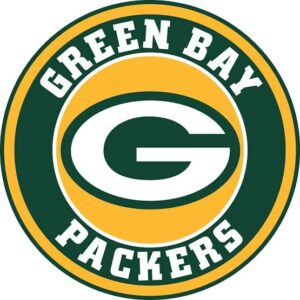General manager of the Green Bay Packers Brian Gutekunst stated that he would prefer to select a quarterback.

He also has a propensity to rigidly adhere to physical attributes. Who is and is not on the draft board may be revealed by looking at the team’s past.
One hour ago, Bill Hubert In this narrative: The Green Bay Packers SPENCER RATTLER, JORDAN LOVE Michael Penix JR. Keldon Johnson Joe Burrow HARTMAN, SAM GREEN BAY, Wisconsin: Green Bay Packers general manager Brian Gutekunst praised quarterback Jordan Love and his youthful backup, Sean Clifford, during the Scouting Combine.
Nonetheless, he said he’d like to get back to regularly drafting quarterbacks, like Ron Wolf used to do with the likes Aaron Brooks and Matt Hasselbeck even with Brett Favre atop the depth chart.
Similar to Ted Thompson’s selections of Brian Brohm and Matt Flynn in 2008 when the club was switching to Aaron Rodgers, Gutekunst selected Clifford in 2023 when the team was switching to Love. But Alex McGough is the third quarterback.
Acquiring an additional skilled quarterback might increase competitiveness and could result in a high-caliber deal within a year or two. Over the last 18 years, Green Bay has selected eight quarterbacks, beginning with Aaron Rodgers in 2005. Is Gutekunst going to make it to nine? Who, if anybody, might it be? Let’s use historical data to refine the field.
(This narrative excludes the six likely first-round picks: Caleb Williams of USC, Jayden Daniels of LSU, Drake Maye of North Carolina, Bo Nix of Oregon, J.J. McCarthy of Michigan, and Michael Penix Jr. of Washington.) Hand Size: Aside from arm skill and calmness under pressure, hand size may be the most crucial characteristic. It gets chilly in Green Bay, after all, and bigger hands equal greater ball security. That is clear from the history of Green Bay’s selected quarterbacks.
– Aaron Rodgers (2005), 10 1/8 inches
– Ingle Martin (2006), 9 1/2 inches
– Brian Brohm (2008), 9 3/4 inches
– Matt Flynn (2008), 9 1/4 inches
– B.J. Coleman (2012), 10 3/8 inches
– Brett Hundley (2015), 10 1/2 inches
– Jordan Love (2020), 10 1/2 inches
– Sean Clifford (2022), 9 5/8 inches
– Two recent backups who were not picked by the Packers are DeShone Kizer (9 7/8) and Tim Boyle (9 5/8). Last training camp, McGough (9 1/8 hands) edged out Danny Etling (9 3/8) for a berth on the practice squad. The historic Scouting Combine average is little about 9 5/8 inches. Only Flynn had smaller hands; Rodgers was one of four quarterbacks with hands at least half an inch bigger.
Allowing for a Flynn-style flyer, these quarterbacks might not be on the board:
Tulane’s Michael Pratt: 9 1/4 inches
Kansas’ Jason Bean: 9 1/8 inches
Florida State’s Jordan Travis: 9 inches
Central Florida’s John Rhys-Plumlee: 8 7/8 inches
But bonus points to:
Tennessee’s Joe Milton: 10 1/4 inches
South Carolina’s Spencer Rattler: 9 7/8 inches
BYU’s Kedon Slovis: 9 7/8 inches
Western Kentucky’s Austin Reed: 9 7/8 inches
Height
The Packers do not like short players at any position. This includes quarterbacks. Rodgers is the shortest of the picked quarterbacks, at precisely 6-foot-2. On the current depth chart, Love is 6-foot-3 3/4, Clifford is 6-foot-2, and McGough is 6-foot-3 3/8.
With that, these quarterbacks might not be on the board:
– Maryland’s Taulia Tagovailoa: 5-foot-10 3/4
– Central Florida’s John Rhys-Plumlee: 5-foot-11 3/4
– South Carolina’s Spencer Rattler 6-foot 1/2
These quarterbacks could be on the fringe:
– Notre Dame’s Sam Hartman: 6-foot-1 1/8
– Florida State’s Jordan Travis 6-foot-1 1/8
– Kentucky’s Devin Leary 6-foot-1 1/4
Interestingly, there appears to be a Goldilocks thought on height. Of the drafted quarterbacks, Love is the tallest. Kizer measured 6-foot-4 1/4.
Tennessee’s Milton is the only unusually tall quarterback at 6-foot-5 1/8.
Athleticism
The historic Scouting Combine average in the 40-yard dash is 4.823 seconds. Green Bay’s 40 times: Clifford, 4.62; Hundley, 4.63; Rodgers, 4.71; Martin, 4.71; Love, 4.74; Flynn, 4.79, Brohm, 4.81; Kizer, 4.83; Coleman, 4.94. Thus, really only Coleman, a seventh-round pick, missed the mark.
Several quarterbacks didn’t run a 40 in this draft cycle. The only one slower than that Combine average was South Carolina’s Rattler (4.95).
Relative Athletic Score.
The Relative Athletic value is a method that integrates a player’s height, speed, 40 time, and other testing results into a single position-based value ranging from 0 (poor) to 10 (excellent). To facilitate comparisons, players are grouped into three color-coded groups: green for 8.0 to 10.0, yellow for 5.0 to 7.99, and red for everyone under 5.0. Since Thompson’s 2005 pick of Rodgers, four were green (Hundley, 9.91; Clifford, 9.01; Martin, 8.93; and Love, 8.54), three were solidly yellow (Flynn, 7.09; Brohm, 6.84; and Rodgers, 6.35), and one was barely yellow (Coleman, 5.23). Boyle’s RAS was 8.71, Etling’s was 8.41, McGough’s was 7.85, and Kizer’s was somewhat below normal at 4.99.
Several quarterbacks didn’t go through enough testing to have a RAS. South Carolina’s Rattler (4.00) and Notre Dame’s Sam Hartman (3.81) had the low scores among the passers listed in this story.
The Best Quarterback Fits
Talking purely about measureable traits, these quarterbacks best meet the team’s standards:
BYU’s Kedon Slovis: 6-foot-2 1/2, 223 pounds, 9 7/8 hands. 4.55 40, 9.34 RAS
South Alabama’s Carter Bradley: 6-foot-3 1/8, 213 pounds, 9 3/8 hands. 4.82 40, 8.56 RAS
Western Kentucky’s Austin Reed 6-foot-1 1/2, 220 pounds, 9 7/8 hands. 4.82 40, NA RAS
And perhaps on the fringe:
Tulane’s Michael Pratt: 6-foot-2 1/2, 217 pounds, 9 1/4 hands. DNP 40, 8.27 RAS
Kentucky’s Devin Leary: 6-foot-1 1/4, 215 pounds, 9 1/2 hands. DNP 40, NA RAS
Notre Dame’s Sam Hartman: 6-foot-1 1/8, 211 pounds, 9 3/4 hands. 4.80 40, 3.81 RAS